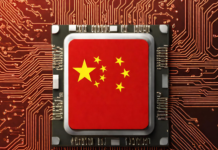Extreme Ultraviolet (EUV) lithography is a critical technology for manufacturing semiconductor chips smaller than 7 nanometers. For years, Dutch company ASML has maintained a global monopoly on EUV machines using the laser-produced plasma (LPP) method. However, since 2019, US-led sanctions have barred ASML from selling advanced EUV equipment to China, tightening restrictions further in 2024 to include EUV masks, etching machines, and other components.

China’s Innovative Approach to EUV
Chinese scientists are now pioneering alternative methods to bypass these sanctions. A breakthrough in EUV light generation has come from adopting the laser-induced discharge plasma (LDP) method, an innovative approach that avoids reliance on LPP technology. The LDP process involves vaporizing tin with lasers and using high-voltage discharge to generate plasma, which produces EUV light. This method is simpler, more cost-effective, and energy-efficient, though challenges remain in optimizing power output.
A significant milestone was achieved by the Harbin Institute of Technology under Professor Zhao Yongpeng, whose team developed a compact and efficient EUV light source using LDP technology. This innovation aligns with photolithography requirements and earned top recognition at the Harbin Provincial Innovation Achievement Competition.
Chinese Institutes make a Breakthrough
In January 2024, the Harbin Institute collaborated with the Shanghai Institute of Optics and Fine Mechanics to enhance EUV light focusing and control. Other institutions, such as Tsinghua University and Guangdong Bay Area Aerospace Information Research Institute, are advancing related technologies, including power optimization and future light sources.
Meanwhile, Shanghai Micro Electronics Equipment (SMEE) filed a patent in 2023 for EUV radiation generators, signaling progress toward domestic lithography equipment. However, SMEE lags behind global leaders like ASML, as it cannot yet mass-produce machines for chips below 28 nm.
Recent Progress and Strategic Investments
China is backing its chip-making ambitions with serious money, increasing its investment from $19 billion in 2014 to $41 billion in 2023. This investment is starting to pay off. SMIC, China’s biggest chipmaker, has already made 7nm chips for Huawei’s Mate 60 Pro smartphone. Another breakthrough is coming from SMEE, which plans to start making 28nm chip-making machines in early 2025. While this is behind the 3nm chips that global leaders can make, it’s still an important step forward.
These 28nm chips are useful in many products like cars and factory equipment, helping China rely less on foreign suppliers. This progress, along with China’s work on EUV technology, shows how the country is pushing ahead despite international restrictions.
Challenges faced by China in Chip Production
China’s semiconductor industry faces hurdles, including dependency on imported components and US-imposed restrictions. Despite this, the country’s multi-pronged approach, including technological innovation, collaboration, and strategic investment, demonstrates its resolve to overcome these barriers and achieve self-reliance in advanced chipmaking.
Stay ahead in tech! Join our Telegram community and sign up for our daily newsletter of top stories!
Related:








Comments